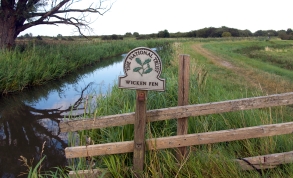Related Content

Livelihood benefits
Changing ecosystem service values in a UK wetland

Food security
Exclosures are areas closed off or protected from interference from people and domestic animals, with the goal of promoting natural regeneration of plants and reducing land degradation of formerly degraded communal grazing lands. Following the establishment of exclosures in the Gomit watershed, in Ethiopia, this study investigated changes in vegetation diversity and aboveground biomass and carbon; and the economic returns of aboveground carbon sequestration (the process of capturing and storing atmospheric carbon dioxide). This result showed that exclosures not only support the rehabilitation of degraded lands, but also potentially deliver livelihood benefits for local communities from the financial incentives of trading their carbon sequestration capacity.
Gomit watershed covers an area of 1483 ha with a population of 360 households. The exclosures were established in 2006 by a self-organised community association in response to natural resources degradation problems. The management and use of exclosures is run by the Community Watershed Team (CWT) who are nine elected members of the community association. In establishing the exclosures in the communal grazing lands, bylaws were drafted and approval was obtained from all association members to protect these areas from people and domestic animals, promote natural regeneration and reduce land degradation.
This study was conducted to detect the changes in aboveground carbon and species composition of communal grazing lands and exclosures that had been operational for a period ranging from 1 to 7 years. Direct health outcomes were not measured, however, indirect exposures such as income generation and impacts on crop production were quantified using household surveys, key informant interviews, and a financial analysis. Income diversification is an effective means of poverty reduction amongst rural populations in low income settings who rely on small-scale farming for livelihood.
The study modelled changes in plant species richness, aboveground standing biomass and carbon following conversion of communal grazing lands to exclosures across the years. Carbon stocks were estimated from the aboveground biomass, thereafter converted to CO2 units to help compute the temporary certified emission reductions (tCER) (this is the tradable unit of one tonne of carbon dioxide-equivalent (tCO2-e) of emissions sequestration) which was estimated as US$3.43 per tCER in this study.
The aboveground CO2 storage in exclosures increased with exclosure duration, and was estimated as tCER of 3.4, 2.1, 7.5, 12.6, 12.5, and 15.3 Mg CO2/ha after 1, 2, 3, 4, 5, and 7 years, respectively. At a watershed level, a tCER of 139.4 Mg CO2/ha was obtainable after 3.5 years of implementation.
Carbon storage in the exclosures generated an estimated revenue of US$6.6 to US$37.0 per hectare, which increased with exclosure duration. At a watershed level (i.e. including the communal grazing areas) this is an average of US$478.3 per hectare after 3.5 years of implementation. The authors estimate the potential income generation may contribute to nearly 42% of the current annual income of the entire community if the carbon stored in aboveground biomass is traded.
Informant interviews and household surveys found the restoration efforts increased vegetation cover, rehabilitated large gullies which reduced soil erosion and loss of crops. There were however mixed views with regards to crop production, the majority (82%) of respondents did not notice any changes, 10% of respondents reported a reduction in crop production due to a reduction in the size of farm plots and 8% said that they thought exclosures increased crop production by reducing soil erosion and sedimentation. In addition, all exclosures displayed significantly higher plant species richness compared to the communal grazing land.
The major concern in the mitigation contribution of forests is the potential reversibility of carbon stored in trees, which has consequences for income generation and thereby scalability. To manage the risks, temporary CER (tCER) are issued over a given time period and are later replaced by permanent CER. This ‘non-permanence’ discourages investors who are required to invest in both tCER and CER and leads to a drop in the prices of forestry credits (BioCarbon Fund, 2011).
Scaling up the mitigation potential of forestry interventions to maximise livelihood benefits will require increasing the unit cost CER in order to increase the economic viability of exclosures as carbon sink projects, surpassing or matching revenue from crop production. In this study, the authors recommend a permanent CER increase from an average of US$25 to US$80 per credit, which would lead to a higher income than the net revenue from teff production which is the dominant crop in the area.